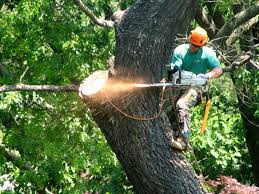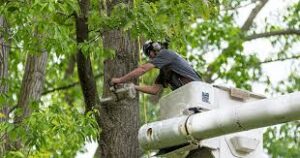 There are a number of reasons why you may need to have a tree removed. Before a professional tree service comes to remove your tree, there are a few things you can do yourself. First, clear the area around the tree. You want to ensure that the area is wide enough for the tree to fall flat.
There are a number of reasons why you may need to have a tree removed. Before a professional tree service comes to remove your tree, there are a few things you can do yourself. First, clear the area around the tree. You want to ensure that the area is wide enough for the tree to fall flat.
Next, contact your utility company and find out which of their services can help you with tree removal. They may have a program that will trim trees that interfere with their lines. This can be an affordable option if you don’t have to pay to have the tree removed. This will reduce the chances of any damage to your utility lines or property.
Before hiring a tree removal service, you should hire one with expert training. These individuals are certified in expert tree care and must regularly renew their certification to stay up-to-date with the latest techniques. They should also be insured. Hiring someone without this training or certification may lead to a dangerous situation. When a tree becomes unhealthy, it should be removed immediately. If you wish to learn more about this, visit Real Tree Trimming & Landscaping, Inc
 You should also ask the arborist to assess the health of your tree and estimate the cost. A sick or dying tree may cost just as much as a healthy tree. On the other hand, a dead tree may be easier to remove. The size of your tree also plays an important role in determining how much it will cost to remove it. The size of the trunk is usually proportional to the tree’s height.
You should also ask the arborist to assess the health of your tree and estimate the cost. A sick or dying tree may cost just as much as a healthy tree. On the other hand, a dead tree may be easier to remove. The size of your tree also plays an important role in determining how much it will cost to remove it. The size of the trunk is usually proportional to the tree’s height.
Before you start removing a tree from your property, check with the Bureau of Forestry in your state. There may be additional rules or regulations that you must follow. In some cases, a permit will be required. If you want to remove a tree on public property, you should seek permission from the municipality.
The cost of tree removal services will vary depending on the type of tree, location, and professional team you hire. Small trees can be removed for $150 to $500. Large trees are a different story. Smaller trees have less risk and require a different set of tools and personnel. Similarly, trees with large heights can require arborists with specialized equipment to climb them. Moreover, the risks involved in the removal of a large tree are higher, increasing the overall cost.
In addition to removing trees, tree service workers may also be required to remove stumps and cut wood. They may also be called upon to identify and treat diseased limbs or remove rotten wood. They may also need to remove trees that are too close to a structure or power line. In addition to these tasks, they may be required to use large trucks for removing the cut wood.